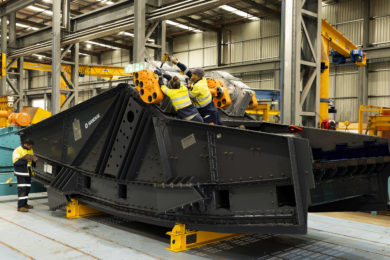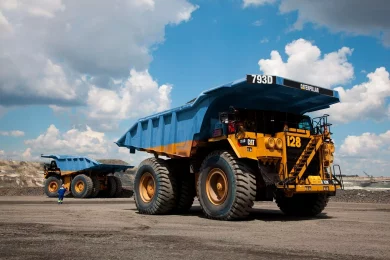Opening the RBC Capital Markets’ second annual Platinum Group Metals (PGM) Conference at Grosvenor House in London yesterday, Leon Esterhuizen, Director and Equity Analyst at RBC Capital Markets said: “Almost three quarters of the world’s platinum supply and about half of the world’s palladium supply comes from South Africa but, given the current strength of the rand, which is effectively neutralising much of the recent US dollar metal price increases, over half South Africa’s supply is generating negative cash flow (after capital expenditure). On the premise that demand may be lower, but will not contract any further, this implies only one of two possible outcomes – either metal prices will have to increase even further or mine production will be cut, pushing prices higher as supply contracts.“Higher metal prices seem likely, but so do higher costs – effectively leaving only two areas of potential investment: ETFs of both platinum and palladium should continue doing well, and new junior producers will be able to supply metal at low cost, reaping the most benefit from a rising metal price. Not only do we believe the low-cost juniors and low-cost projects will benefit, but it should be clear that these also represent excellent takeout targets for majors struggling with high costs.”Mineweb writes that “in a refreshing, and enlightening presentation, Aquarius Platinum CEO, Stuart Murray – instead of presenting a sales pitch on the company as did most of the other speakers at the event, instead set out a refreshingly sanguine and honest, picture of the realities facing the South African platinum sector in today’s economic environment.Murray’s presentation was over lunch and he chose to give it informally without Powerpoint aids, or other visual statistical props. He devoted his time to telling the audience of the realities facing the South African platinum miners today – a sector in which he reckoned that two thirds of current production was, if one takes sustaining capital expenditure into account, at break even or worse.Not only are miners faced with a platinum price that is back at 2005 levels, but with 2010 costs and an ever-strengthening Rand against a declining dollar in which the metal is priced. And there may yet be no respite with “President Obama turning the dollar into the peso and Gordon Brown the U.K. pound into the lira!” This is coupled with a virtual freeze in new car manufacture – the automobiles being bought now were probably all built or assembled at least a year ago – and a corresponding complete lack of purchases of platinum by the western auto sector. Murray quoted the CEO of one of the world’s biggest automobile manufacturers as saying his company hadn’t bought an ounce of platinum for 13 months – and when asked when purchases might be resumed the answer was still another 3-9 months away!There has been one mitigating sales element out there and that is sales to the jewellery market in the East where high gold prices and relatively low platinum ones, have made the latter more attractive – but then the high gold price has also had the effect of dragging other precious metals up with it, including platinum and he fears this fillip to demand may thus be short-lived.With around 60% of platinum destined for the auto industry, but with only China showing any real growth in auto purchases, this puts the industry in a difficult state, and the logic is that maybe platinum prices are actually higher than the current market situation might justify.In South Africa itself there is yet another worry for the miners. The country’s state-owned electricity utility, Eskom, which supplies virtually all the country’s power, is faced with financing a R350 billion programme to build up its power supply capacity and is talking about 40% year on year price increases for the power it supplies. (South Africa has had up to now some of the world’s lowest power costs.) The deeper underground platinum mines, along with plants and smelters etc. are heavily power dependent. Meanwhile forward costs may be exacerbated by the strong South African labour unions also looking to yearly above-inflation pay increases.All in all this is not a pretty picture for the existing South African platinum miners, yet alone the juniors developing new platinum mining projects there. The latter may have an advantage in some cases in terms of being able to keep costs down, but raising debt finance in the platinum sector at the moment is virtually impossible and in most cases stock prices are too low to contemplate equity financing. Murray reckons a platinum price of at least $1,700 an ounce is needed to get a Greenfield project into production. He also sees little chance of the major producers, Anglo Platinum, Impala and Lonmin, cutting production in line with the demand fall and perhaps bringing more stability to the metal price.Murray was also a little scathing on platinum ETFs pointing out that during last October’s financial meltdown that in the platinum sector was exacerbated by sales of holdings of platinum ETFs leading to the offloading of 350,000 ounces of inventory in 3 weeks which helped decimate the metal price.Looking at the current stock price situation Murray reckoned that arguably stock prices have run ahead of reality, but there may still be investments which are worthwhile in the sector. “Do your homework” he said. “Look at margins on a Rand basis – also look closely at what the company is p***ing away on capex.”Aquarius itself is one of the country’s most successful and lowest cost mid-tier producers, but cuts its cloth according to its needs. Its Everest mine is currently on a care and maintenance basis, but Murray reckons the company won’t bring it back into production until there are clear shareholder benefits in doing so – which may not be until the middle of next year, if then.Despite all the problems faced by the industry at the moment – “This space is going to be very hard work” he said, Murray still has confidence in the sector. “It’s a case of when, not if” he said talking about price recovery; but I can’t tell you when!”Among other speakers at the conference was James Wellsted, Executive Manager Commercial of Mvelaphanda Resources, who said: “While we anticipate continued weakness in prices due to the depressed global economic climate, we are positive about the longer term outlook for the PGM market. Northam Platinum, in which we have a majority stake, is well positioned, with its Zondereinde mine cash generative even at current low metal prices and significant growth potential at its Booysendal project.”Other speakers sharing insights at RBC Capital Markets’ conference were Anooraq Resources, Eastern Platinum, Jubilee Platinum, Platinum Australia, Platinum Group Metals, Nkwe Platinum and Sylvania Resources.









